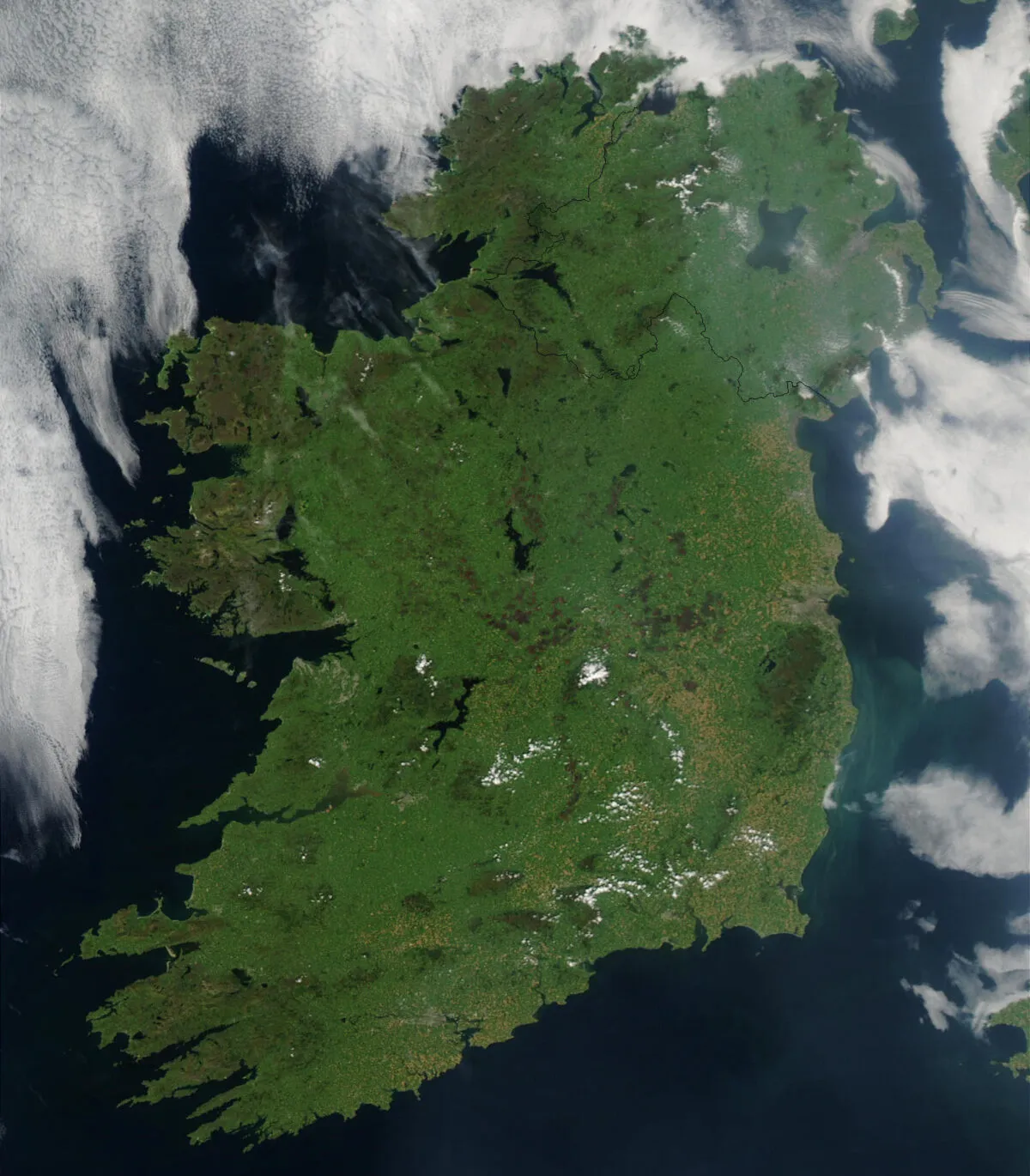One of the most striking sights you might see in satellite photos of Earth from space is when a lake, or an area of the sea or ocean, is unexpectedly alive with colour – usually green, but sometimes also red, gold or purple.
This striking colouration is the result of an algae bloom, the like of which can be seen from space.
More Earth from space

Nearly all natural bodies of water (streams, rivers, lakes, seas and oceans, as opposed to reservoirs, swimming pools and the like) contain algae: small plant-like organisms that live in water.
But an algae bloom occurs when the numbers of these algae proliferate suddenly, and they can be seen from space.
Algae come in many forms, from tiny organisms that are invisible to the naked eye, to kelp and other seaweeds.
Many types of algae can be subject to blooms, but blooms most regularly affect the specific type known as phytoplankton, which is why algal blooms are often referred to as 'phytoplankton blooms'.

Phytoplankton themselves can broken down into various types – diatoms, cyanobacteria and dinoflagellates – so you may also come across terms such as 'diatomic bloom' or 'cyanobacterial bloom'.
But they’re all just types of algal bloom.
Algae blooms can form at sea or in lakes – that is to say, in both salt water and fresh water – and they can have a variety of natural or anthropogenic (i.e. human-made) causes.

They occur when the body of water experiences an uptick in the level of nutrients (primarily nitrates and phosphates) it contains.
This can happen naturally when nutrient-containing sediments are stirred up from the sea or lake bed.
For instance, if there’s an earthquake or, in the case of some lakes with a very stratified ecosystem, when there’s an ingress of water from a nutrient-rich to a nutrient-poor layer.

Most algal blooms in the modern world, however, are caused by agricultural run-off.
Nitrogen- and phosphorus-rich fertilisers used to boost crop yields find their way into the water table and inexorably make their way to the sea (or into a lake).

Harmful Algal Blooms
The algal blooms that result from this process can be pretty to look at, but in some cases they can also be extremely harmful.
At the very least, the sudden rapid proliferation of algal species depletes the water of oxygen, which can devastate local populations of fish and other marine species.
But some species of algae can also themselves be toxic in large quantities.
The species Microcystis aeruginosa is toxic to humans, for instance, while Chaetoceros convolutus damages fish’s gills.
Such harmful outbursts are known as Harmful Algal Blooms (HABs).
HABs have been linked to cases of food poisoning caused by people consuming contaminated shellfish, while beachgoers who’ve come into contact with HABs have reported respiratory tract infections and eye and nose irritations.
Monitoring algae from space
Luckily, NASA appears very much 'on it' when it comes to monitoring algae from space.
NASA is part of the Cyanobacteria Assesment Network (CyAN project), a multi-body initiative that includes the Environmental Protection Agency, the National Oceanic and Atmospheric Administration and the U.S. Geological Survey.
By using Earth-monitoring satellites, they can keep track of harmful algal blooms from space and other water quality issues, providing information to local authorities to help minimise the danger.
Algae bloom and Jupiter's clouds

There is an upside, though, at least as far as planetary science is concerned.
Astronomers studying atmospheric data sent back by NASA’s Juno probe, which studies conditions on Jupiter, observed a marked similarity between the fluid dynamics they saw occurring in the Jovian cloud tops, and those observed in ocean waters during algal blooms here on Earth.
This could enable them to model Jupiter's clouds’ behaviour more accurately in the future.
